Polar Night has truly set in at Rothera. June 21st, Midwinter’s Day, marked the longest period of darkness in 2025. The sun, in fact, hasn’t risen above the horizon for a couple of weeks now. Not that we’d know: the conveniently located mountains block our view of it for several weeks longer than the true Polar Night actually lasts.
How do you define daytime when you never see the sun? At Rothera, we use the marker of civil twilight. This begins when the sun is between 0º and 6º below the horizon and ends either when it comes up (as it will on June 28th) or drops further (as it does each day). Currently, civil twilight runs from around 11am to 4.30pm. Either side of that window, it’s pretty much just dark.
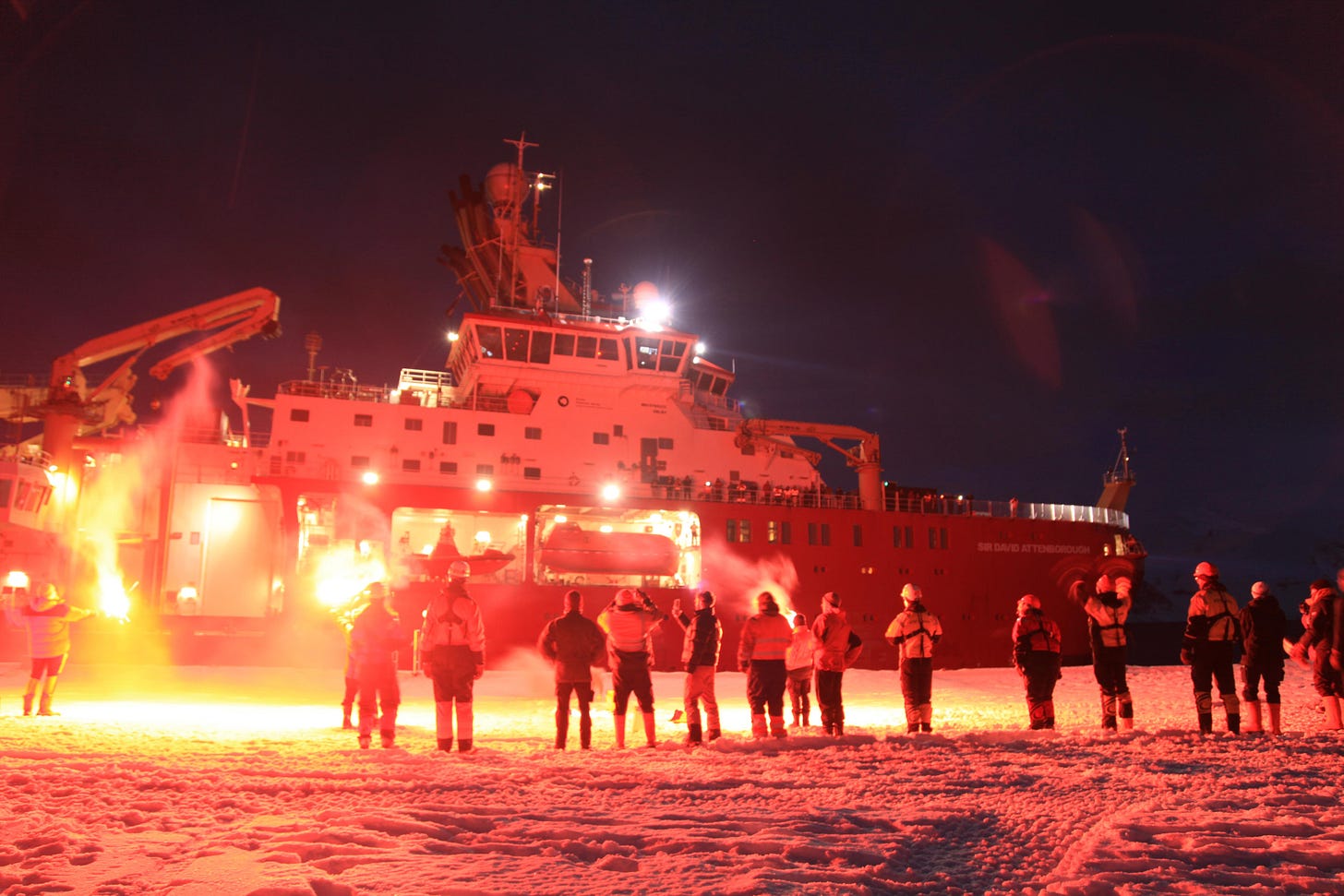
Though many aspects of Antarctica are unique, this limited-sun aesthetic feels especially so. Before we even have a chance to go boating or leave station, we’ve often already done several hours of work. Sometimes, I’m just sitting and waiting for enough light to get on with the day’s tasks. It’s a far cry from the austral summer, when I’d be down early to warm the tractor so we could get afloat as quickly as possible.
The darkness set in fast. It almost felt like it snuck up on us, as if only a few weeks ago we still had a normal amount of light. I didn’t think it was affecting me much, until the physical symptoms started. I was waking up between 2am and 4am, unable to fall back asleep. For a few days, it seemed like no one on station was sleeping properly. Even once that passed, I was feeling sick each morning and struggling to eat properly, either craving junk food or having no appetite at all.
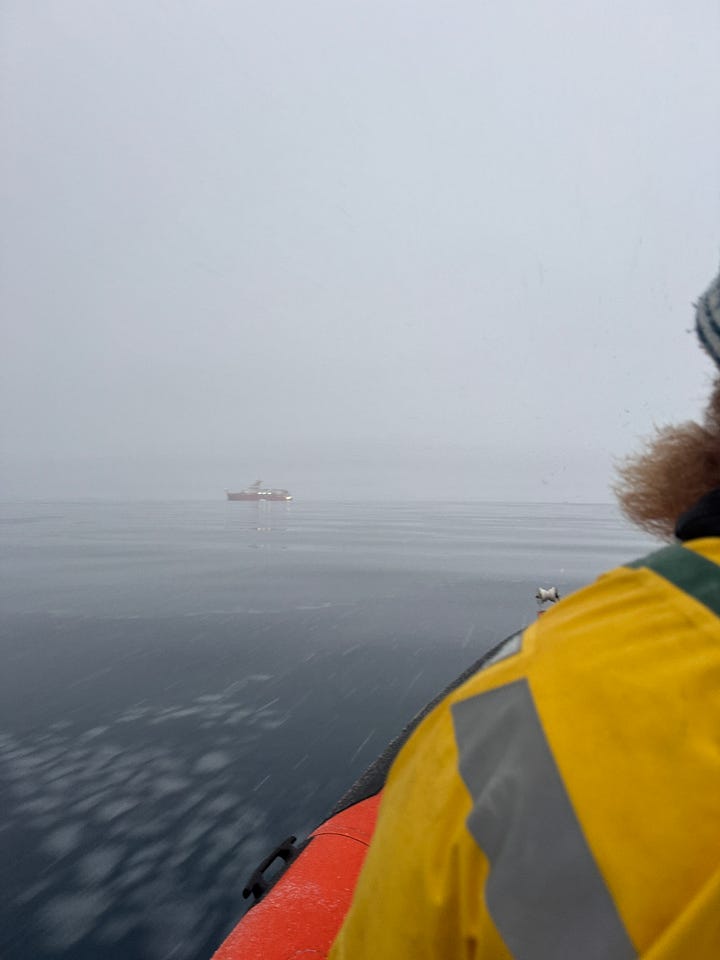

Fortunately, picking myself up was straightforward. I realised that staying healthy in the dark, mentally and physically, required active effort. I started using a SAD lamp (a really bright light designed to mitigate limited sun exposure) for about an hour each day, and began going to the gym a few times a week. Both helped immensely.
But here’s the thing, although it’s dark, it really isn’t that bad. Like much of Antarctic life, it’s not nearly as extreme as I’d imagined. Civil twilight often feels much like the tail end of a UK winter’s day: gloomy, often overcast, and just not especially inspiring. But we’re not living in 24-hour darkness, and sometimes we’re treated to otherworldly colours on brighter days. And there’s still plenty to enjoy and look forward to.
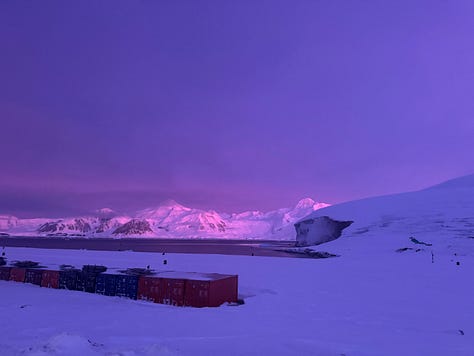

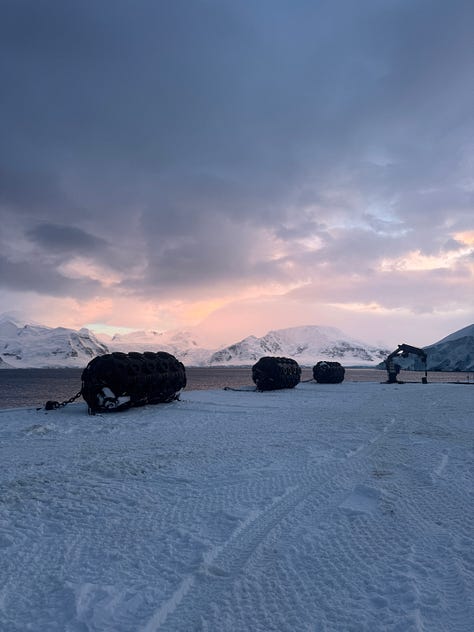
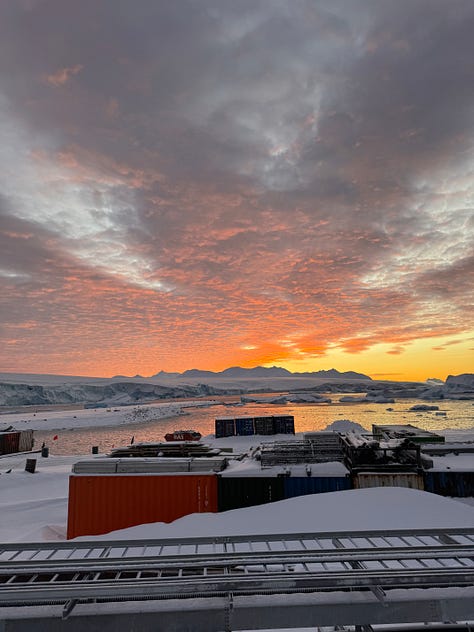
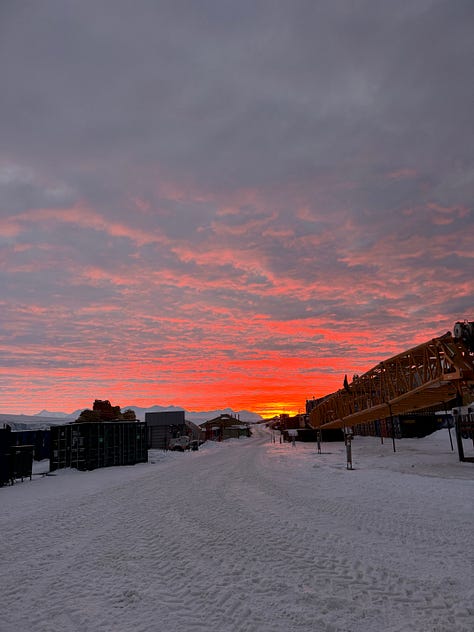
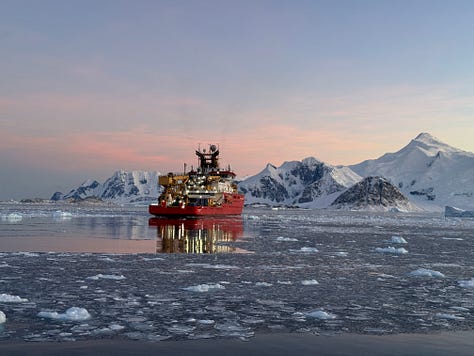

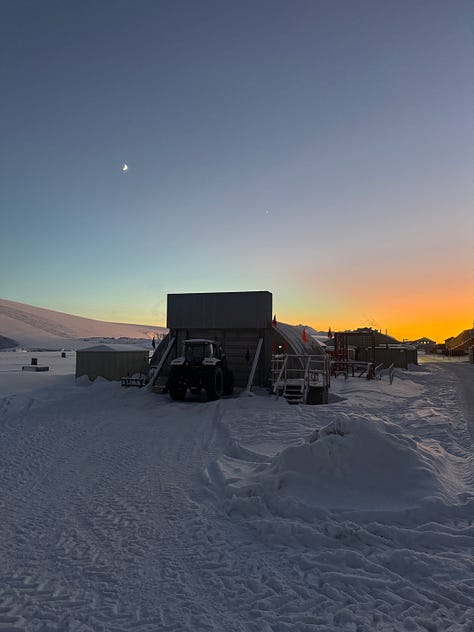
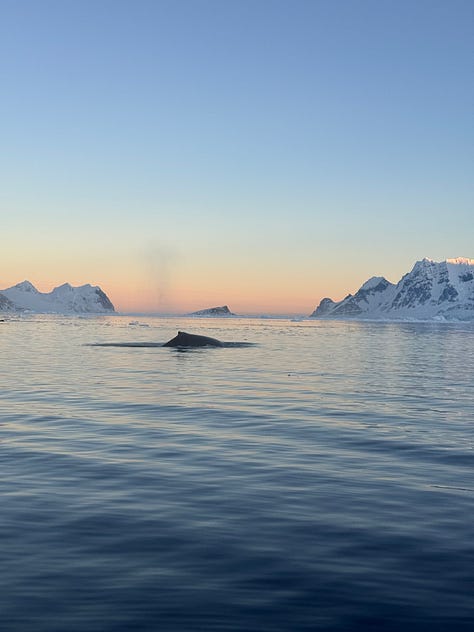
Midwinter’s Day is the biggest night in the Antarctic calendar. For decades, it has marked a significant point for the few staff remaining on the continent. For most, it comes well after the last ships and planes have left, and it reflects considerable resilience for individuals and communities alike. This year, fewer than 1,000 people remain in Antarctica, which is astonishing for a continent the size of China and India combined.
Following tradition, the most significant part of the day was the formal Midwinter’s dinner. Our chefs prepared a six-course feast, with a menu extending as far as a ‘pre-dessert’. Afterwards, we gathered in the Operations Tower (the flashy new one in the Discovery Building) to listen to Midwinter’s messages on the BBC World Service, recorded by our families weeks in advance. Everyone on station had the whole week off work, and we spent it resting and taking part in various events. One highlight was the ‘Winter Olympics’, where teams competed in Tug of War, javelin (throwing a ‘bog chisel’), sled pulling, and pipe-filling.
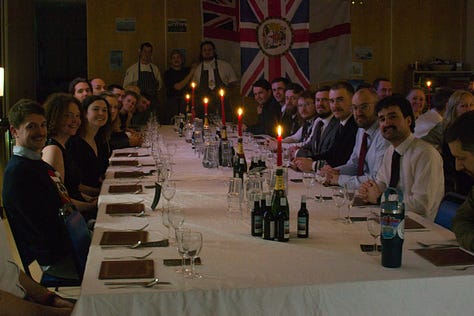
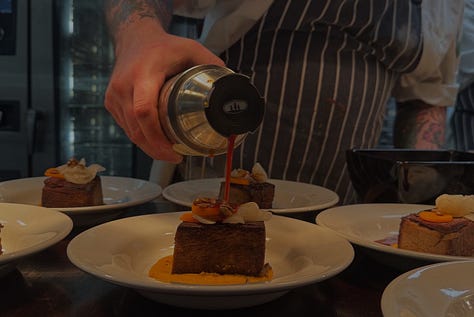
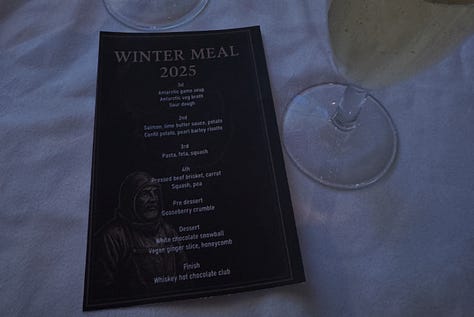
The other main event, and one of my favourite nights at Rothera so far, was the station ‘pub crawl’. Obviously, we don’t have a series of pubs on station, so instead each department transformed one of their buildings into a themed bar. Every one of them was brilliant. The Doctor’s Surgery ran a Chernobyl-themed bar (we’ve been watching the series recently), complete with games to insert control rods into a homemade reactor core and drinks served in syringes. At the Bonner Laboratory, we ran Battleships, flipper relays, and a low-visibility diving simulator. Our drinks of choice were ‘snow ducks’: sweet liqueur mixed with snow and shaped with a plastic press. In the Discovery Building, the Tower became a sophisticated sky bar with mixed cocktails, while another room was transformed into a dark, smoky nightclub.
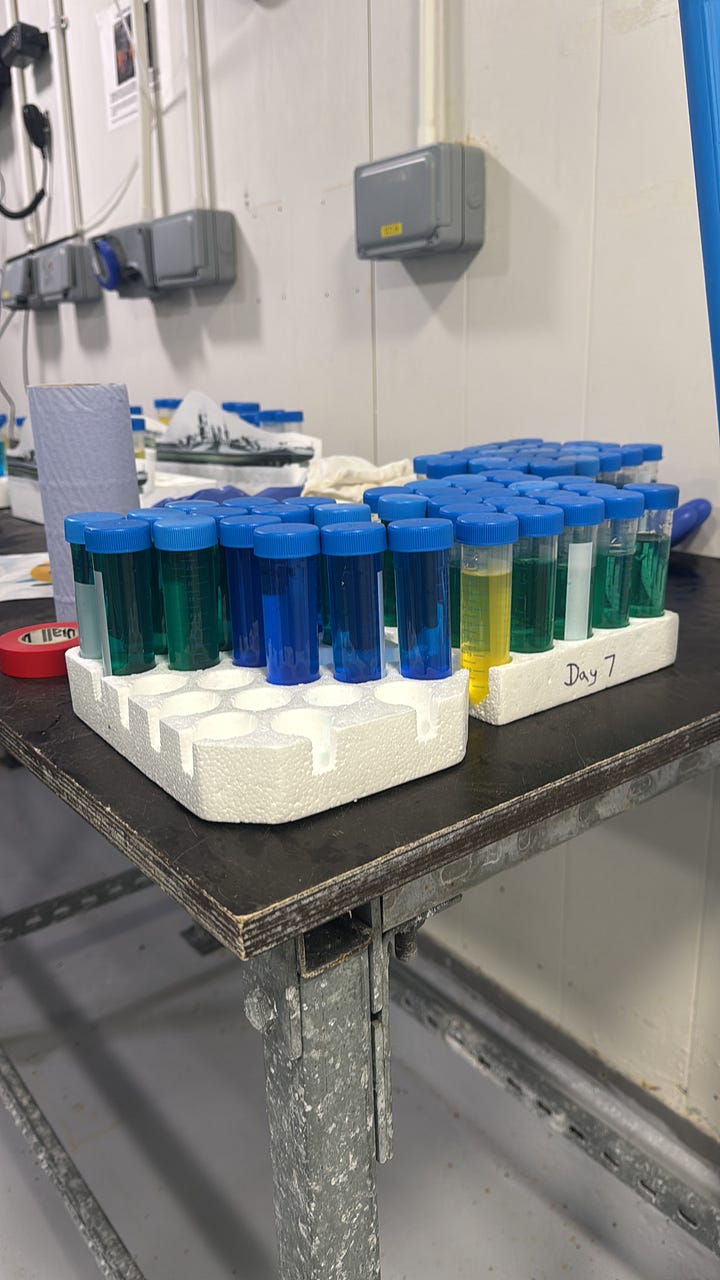



Perhaps the most cherished tradition of all is the exchange of Midwinter’s gifts. Months ago, we drew names in a secret-Santa style arrangement. Crafting a personalised gift as a memento of the Antarctic winter is a time-honoured tradition across the continent. People often spend tens of hours on these gifts, using skills learned on the job. Wood and metal are the most popular mediums, though fabric and glass sometimes make an appearance.
For my part, I lathed a wooden tankard, attached a handle shaped into a whale’s tail, and wood-burned the outline of a mountain into the front. I received a beautifully crafted wooden box, with joints so perfect you couldn’t feel a ridge or seam. The lid had an incredibly detailed compass burned into it. Inside were two wooden coasters, each intricately etched with an orca and a leopard seal. Looking over the table, every gift was the same: meticulously created, deeply personal to both the maker and the recipient.
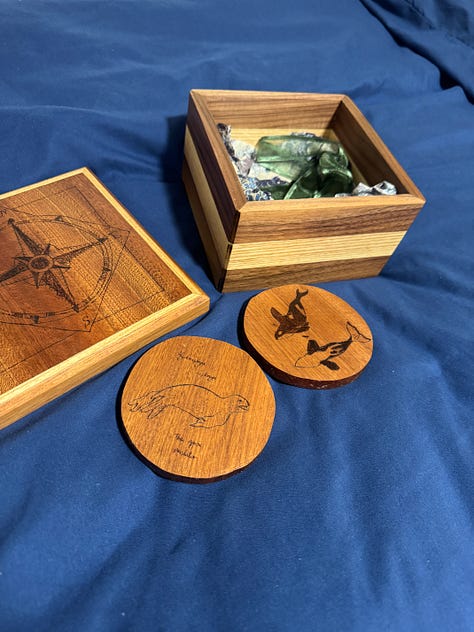
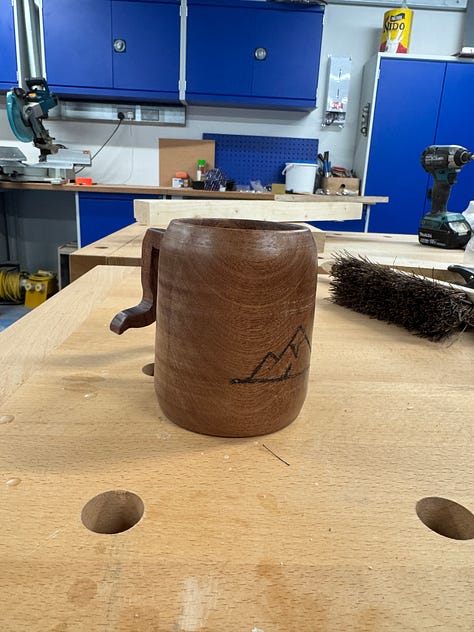

Now, with Midwinter’s week behind us, we’re back at work. The days remain short and bookended by long hours of darkness. But the break was reinvigorating. So much of what we do here becomes routine, like any job. Even breaking through sea ice and wading through snow is par for the course. But that week served as a powerful reminder that our 41-strong community here in Antarctica is much more than just a workplace.





Fabulous photos. Sounds like a very creative group of people.❤️